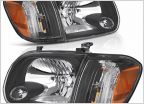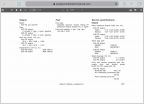-
Welcome to Tundras.com!
You are currently viewing as a guest! To get full-access, you need to register for a FREE account.
As a registered member, you’ll be able to:- Participate in all Tundra discussion topics
- Transfer over your build thread from a different forum to this one
- Communicate privately with other Tundra owners from around the world
- Post your own photos in our Members Gallery
- Access all special features of the site
Tundra won't start due to a bad oil pressure gauge?
Discussion in '1st Gen Tundras (2000-2006)' started by Tundra2001, Jul 29, 2019.


 2005 Sequoia Headlight Assembly Replacement....
2005 Sequoia Headlight Assembly Replacement.... Door Lock / Sticky Ignition Quick Fix
Door Lock / Sticky Ignition Quick Fix Need Help Disabling Automatic Door Locks...
Need Help Disabling Automatic Door Locks... Rear diff
Rear diff 2003 v6 misfire
2003 v6 misfire Which plugs?
Which plugs?














































































